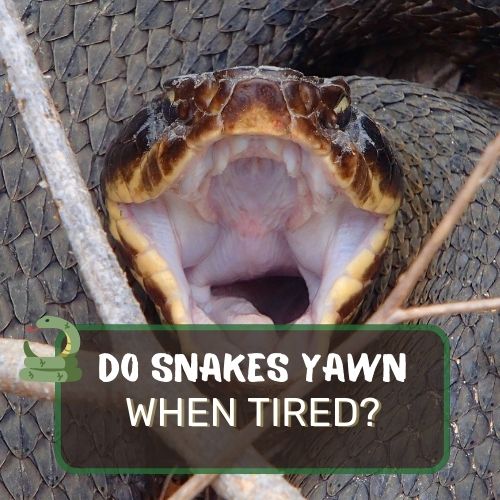
Curious about whether snakes yawn when tired? In this article, we unravel the mysteries behind snake yawning behaviors and delve into the fascinating reasons behind this captivating phenomenon.
Prepare to discover the multifaceted world of snake behavior, shedding light on the science, misconceptions, and real motivations that drive these yawns.
We’ll explore the unique physiological adaptations that enable snakes to yawn, and how their behaviors communicate more than just sleepiness.
From shedding preparation to communication and threat displays, each yawn carries a tale of survival and adaptation.
Join us as we journey through the science and stories that revolve around the intriguing question: “Do snakes yawn when tired?”
Table of Contents
- 1 Do snakes yawn when tired? (Short Answer)
- 2 Myths about Snakes and Yawning
- 3 Reasons Why Snakes Yawn
- 4 Stretching and Realignment
- 5 Communication and Threat Display
- 6 The Science Behind Snakes and Yawning
- 7 Comparison with Other Animals
- 8 Common Misinterpretations of Snake Yawning
- 9 Observing Snakes in Captivity
- 10 FAQ
- 11 Conclusion
Do snakes yawn when tired? (Short Answer)
No, snakes do not yawn when tired in the same way humans do. Yawning in snakes serves different purposes and is not a direct indication of tiredness. Snakes yawn for various reasons, including preparing for shedding, stretching their jaws, communicating with other snakes, and potentially as a threat display. Unlike humans, snakes don’t experience fatigue in the same manner due to their distinct physiological and behavioral characteristics.
Yawning in snakes is a fascinating behavior that reflects their remarkable adaptations and survival strategies, highlighting the complexity of their interactions with their environment and fellow snakes.
Myths about Snakes and Yawning
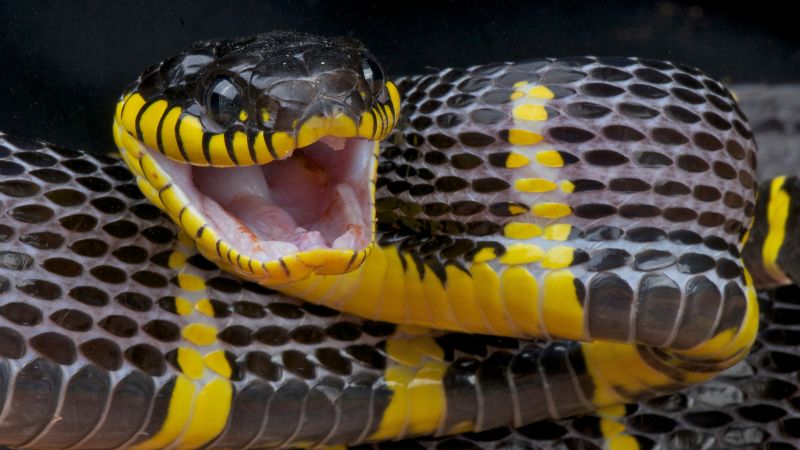
Common Misconceptions about Snakes Yawning When Tired
Snakes have always fascinated us with their mysterious and enigmatic behavior. One of the intriguing myths that has circulated is whether snakes yawn when they’re tired, similar to how humans do.
This notion has captured the imagination of many, often fueling assumptions about snake behavior that might not hold up to scientific scrutiny.
While it’s natural to anthropomorphize animals, attributing human-like behaviors to them, it’s essential to delve deeper into the realities of snake behavior. Yawning in snakes isn’t necessarily an indication of tiredness; it’s more complex than that.
Let’s unravel the science behind this fascinating behavior.
Debunking the Myth That Snakes Yawn Due to Fatigue
Yawning is a universal behavior observed in various animals, including snakes. However, the reasons behind a snake’s yawn differ significantly from those of a human’s tired yawn. Unlike humans, snakes don’t experience tiredness in the same way.
Instead, their yawns often serve various biological purposes.
When a snake yawns, it’s not an expression of sleepiness or exhaustion. Rather, it’s a means to an end, a signal of significant processes happening within their bodies.
Snakes often yawn as a part of their natural behaviors, and one of the most intriguing reasons behind their yawns is related to their shedding cycle.
Reasons Why Snakes Yawn
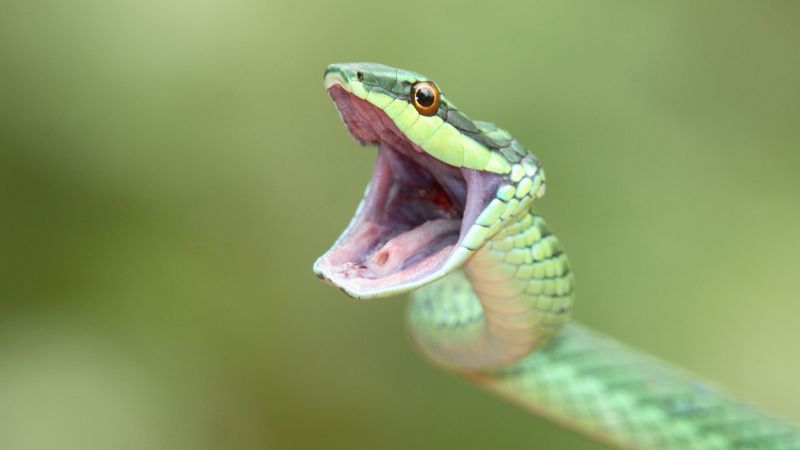
Shedding Cycle
Snakes, in their eternal quest for growth, undergo a remarkable process called shedding. As they grow, their skin becomes restrictive, prompting them to shed their old skin to make way for the new.
This natural phenomenon is vital for their survival, allowing them to maintain their flexibility and continue growing.
How Snakes Prepare for Shedding by Yawning
Before entering the shedding process, snakes exhibit behaviors that indicate their readiness. One of these behaviors is yawning. While it might seem counterintuitive at first, yawning actually serves a specific purpose in this context.
When a snake yawns, it helps to stretch and loosen the skin that’s about to be shed. This action prepares the old skin to separate from the new one underneath.
The yawning motion essentially helps the snake’s body initiate the shedding process. It’s like nature’s way of giving the snake a head start before the more intricate stages of shedding begin.
This behavior showcases the intricacies of adaptation that evolution has bestowed upon these remarkable creatures.
The Purpose of Yawning in the Shedding Process
Yawning, in the context of shedding, is a remarkable example of how animals have evolved to optimize their survival strategies. By stretching and loosening their old skin, snakes make the process of shedding much smoother.
The old skin can easily slide off, revealing the fresh, vibrant skin underneath. This ensures that the snake’s movement remains unhindered, allowing it to explore, hunt, and thrive without the constraints of an outdated exterior.
In essence, the yawning behavior is a prelude to a more profound transformation that snakes undergo. It’s a tangible reminder that the animal kingdom is full of wonders that often defy our initial assumptions.
Understanding the real reasons behind behaviors like yawning helps us appreciate the beauty of evolution and the intricate ways in which different species adapt to their environments.
As we’ve explored, the idea of snakes yawning when tired is a misconception rooted in our tendency to anthropomorphize animals. Instead, these yawns are windows into the remarkable processes that govern snake biology.
So, the next time you hear about a snake yawning, remember that it’s not a sign of sleepiness but a part of their awe-inspiring journey of growth and adaptation.
Stretching and Realignment
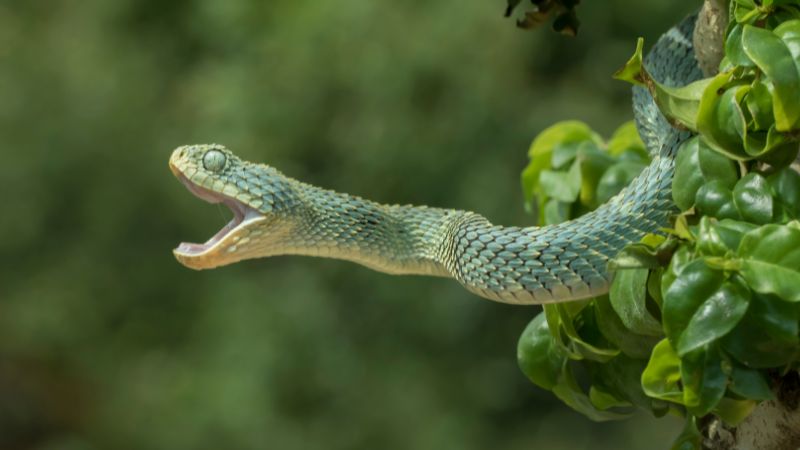
Yawning as a Way for Snakes to Stretch Their Jaws and Realign Their Teeth
Snakes possess a fascinating anatomical feature: their ability to consume prey much larger than their heads. This feat is made possible by their remarkable jaw structure, consisting of numerous ligaments and elastic tissues that allow their mouths to stretch immensely.
Yawning in snakes isn’t solely related to shedding or communication; it’s also an integral part of their jaw maintenance.
When snakes yawn, they’re not only preparing for shedding or signaling, but they’re also engaging in a crucial routine to stretch their jaws.
The act of yawning helps them keep their jaw muscles and ligaments supple, allowing them to maintain their extraordinary ability to consume large prey items. This process also assists in realigning their teeth, ensuring they’re always ready for their next meal.
The Benefits of Yawning for Snakes’ Oral Health
Think of yawning as a snake’s version of a morning stretch. Just like how we stretch our bodies to relieve tension and keep our muscles flexible, snakes yawn to maintain the flexibility of their jaw structure.
This routine jaw stretching and realignment contribute to their overall oral health. By ensuring their jaws and teeth are in optimal condition, snakes can continue their unique feeding habits without hindrance.
Communication and Threat Display
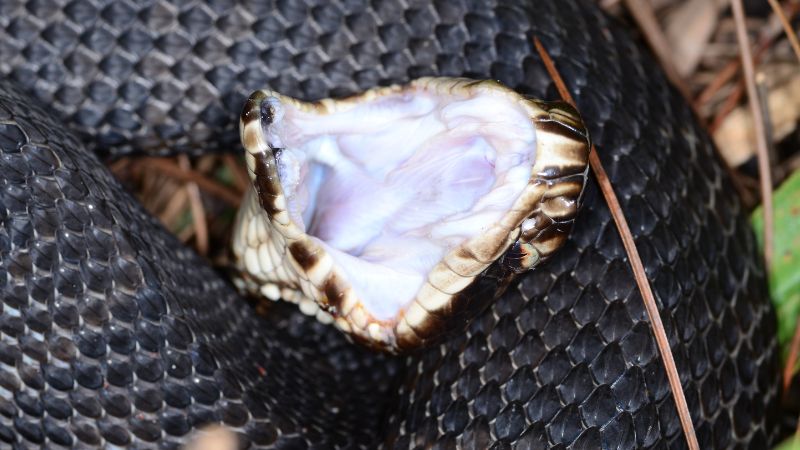
Yawning as a Form of Communication Among Snakes
Snakes are known for their ability to communicate using various methods, from body postures to hissing sounds. Yawning is yet another aspect of their communication repertoire.
When snakes yawn in the presence of other snakes, it can convey important information about their state of being. It might indicate their readiness for interaction, their territorial boundaries, or even their mood.
This communication through yawning showcases the intricate social dynamics within the snake world.
Yawning as a Potential Threat Display
Beyond communication, yawning in snakes can serve as a potential threat display. In some species, a wide-open mouth and gaping jaws can be an intimidating sight, especially if accompanied by other defensive postures.
While not all instances of snake yawning are related to threats, this behavior can deter potential predators or competitors by showcasing the snake’s impressive size and menacing appearance.
In the realm of snakes, yawning goes far beyond the realm of tiredness. It’s a multi-faceted behavior that offers insights into their physiology, social interactions, and defensive strategies.
As we peel back the layers of snake behavior, we uncover a world of complexity that challenges our initial assumptions and invites us to appreciate the nuanced lives of these mesmerizing creatures.
The Science Behind Snakes and Yawning
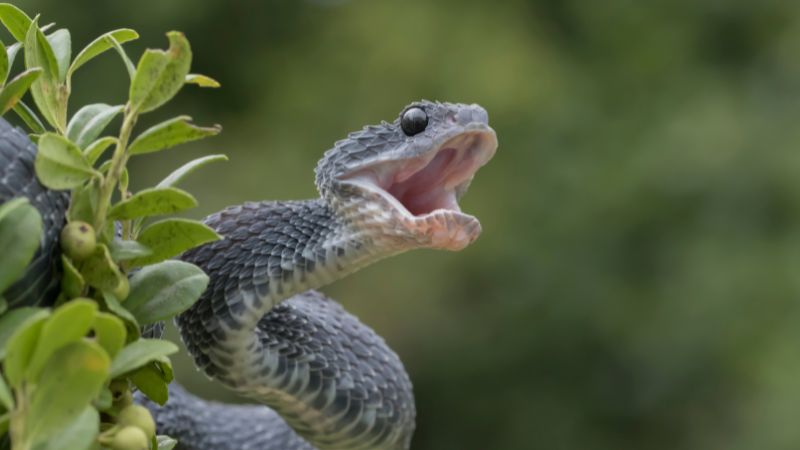
The Anatomy of a Snake’s Jaw and Mouth
To truly understand why snakes yawn, we must delve into the fascinating anatomy of their jaw and mouth. Unlike mammals, snakes have highly mobile skulls with a unique joint that allows them to open their mouths incredibly wide.
Their lower jaws aren’t fused at the chin, which enables them to stretch their mouths to jaw-dropping proportions.
How the Structure of a Snake’s Jaw Allows for Yawning
The flexibility of a snake’s jaw is thanks to an intricate system of ligaments, muscles, and specialized connective tissues. When a snake yawns, these structures work in harmony, allowing the snake to open its mouth widely.
This ability is crucial for their feeding habits, as it enables them to consume prey much larger than their heads. The same mechanism that lets them devour a meal also enables the yawning motion we observe.
The Physiological Reasons Behind Snake Yawning
From an evolutionary standpoint, snake yawning has multiple advantages. It helps them prepare for shedding by stretching their skin, ensures their jaw remains supple for feeding, and serves as a method of communication and potential threat display.
These physiological reasons have evolved over millions of years, optimizing snakes’ survival and adaptation in their diverse habitats.
Comparison with Other Animals

Contrasting Snake Yawning with Yawning in Other Animal Species
Yawning isn’t exclusive to snakes; it’s a widespread behavior observed in many animals, including mammals, birds, and even fish. However, the reasons behind yawning can vary significantly between species.
While snakes yawn for shedding, jaw maintenance, and communication, other animals might yawn as a response to oxygen levels, boredom, or even social cues.
Differences and Similarities in the Reasons for Yawning
In comparison to other animals, the uniqueness of snake yawning lies in its multifaceted nature. While some similarities exist, such as the stretching function, the specific purposes behind yawning set snakes apart.
For instance, while both humans and snakes use yawning to prepare for activities (such as humans yawning when waking up or snakes yawning before shedding), the processes and underlying biology differ significantly.
The diversity in yawning behavior across species underscores the complexity of the animal kingdom. From social cues to physiological adaptations, yawning serves various functions, each tailored to the specific needs of the creature displaying it.
As we’ve journeyed through the captivating world of snakes and their yawning behaviors, we’ve discovered that yawning isn’t a simple expression of tiredness for these creatures.
It’s a behavior intertwined with their unique biology, intricate social dynamics, and remarkable survival strategies.
By exploring the science behind yawning in snakes, we gain a deeper appreciation for the wonders of nature’s design and the fascinating stories that unfold within the animal realm.
Common Misinterpretations of Snake Yawning
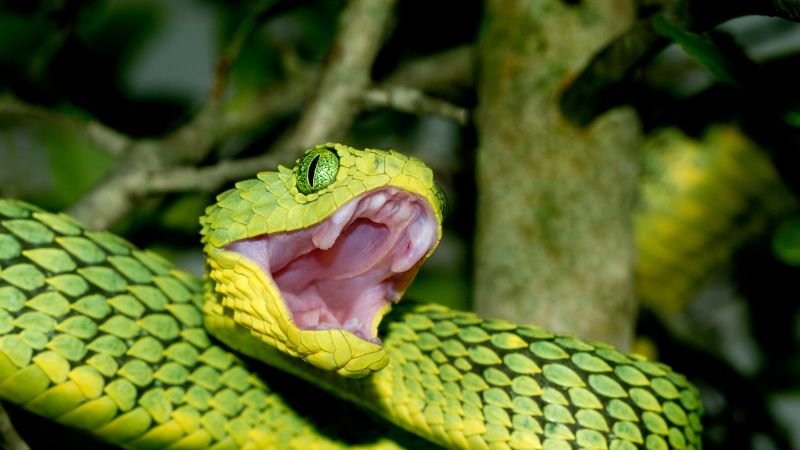
Misconceptions About Snake Yawning
As with any captivating natural behavior, snake yawning has led to its fair share of misconceptions and misinterpretations. People often ascribe human emotions and behaviors to animals, which can cloud our understanding of their true motivations.
The idea that snakes yawn due to tiredness is just one of these misconceptions.
The True Meanings Behind Snake Yawning Behaviors
Through our journey into the world of snake behaviors, we’ve uncovered the real reasons behind their yawns. From shedding preparation to jaw maintenance and communication, snakes exhibit a range of yawning behaviors that serve specific functions.
Recognizing these functions helps us dispel the notion that snakes yawn for the same reasons humans do when they’re tired. By understanding the science and evolutionary history behind snake yawning, we gain a more accurate perspective on their behaviors.
Observing Snakes in Captivity

Insights from Snake Owners and Herpetologists on Observing Yawning in Captive Snakes
Captivity offers a unique opportunity to closely observe snake behavior in controlled environments. Snake owners and herpetologists have noted instances of yawning in captive snakes, shedding light on the prevalence and frequency of this behavior.
While captive settings might differ from the wild, they provide a valuable window into understanding how snakes respond to various stimuli and conditions.
Factors That May Influence Yawning in Snakes
Captive environments introduce a range of factors that could influence yawning in snakes. These might include changes in lighting, temperature, feeding schedules, and interactions with humans or other snakes.
Observations in captivity contribute to our understanding of the nuances of snake behavior, shedding light on how external factors can trigger or modify their yawning behaviors.
As we delve into the world of captive snake observation, we’re reminded that while captivity offers controlled conditions, these observations can still enhance our comprehension of these enigmatic creatures.
They provide valuable data points that contribute to the broader tapestry of snake behavior knowledge.
The captivating journey through the intricacies of snake yawning has taken us from myths and misconceptions to the fascinating science that underpins their behaviors.
By recognizing the complexities of yawning in snakes, both in the wild and in captivity, we gain a deeper appreciation for the remarkable ways in which these creatures adapt and communicate within their environments.
FAQ
Why Is My Snake Yawning?
If you’ve noticed your snake yawning, rest assured—it’s not a sign of sleepiness. Snakes yawn for a variety of reasons, including shedding preparation, jaw stretching, and communication. Their unique biology and behaviors contribute to these yawns, reflecting their remarkable adaptability and survival strategies.
Why Does My Snake Keep Opening Its Mouth?
Frequent mouth opening in snakes can be a normal behavior. They might be regulating their temperature, preparing for shedding, or even communicating with their environment. Observing their overall behavior and context can provide insights into the reasons behind this action.
Why Do Pythons Yawn?
Pythons, like other snakes, yawn for several reasons. Yawning aids in their shedding process, helps them stretch their jaws for feeding, and serves as a form of communication. Pythons, being a diverse group, may exhibit yawning behaviors specific to their species and habitats.
Do Snakes Yawn to Smell?
Contrary to popular belief, snakes don’t yawn to smell their surroundings. Yawning in snakes primarily serves functions related to shedding, jaw maintenance, and communication. Snakes have other specialized sensory adaptations, such as their highly developed sense of smell through their forked tongues and Jacobson’s organ.
Conclusion
The captivating world of snake yawning has taken us on a journey of discovery, dispelling myths, and revealing the intricate layers of snake behavior. Yawning isn’t a simple expression of tiredness in these creatures; it’s a complex behavior interwoven with their biology, social dynamics, and environmental adaptations.
From shedding to communication, yawning reflects the remarkable strategies that snakes have developed over millions of years.
As we part from this exploration, let’s remember that every yawn from a snake is a glimpse into a world of wonders. These creatures, with their enigmatic behaviors, remind us of the vast diversity and beauty that our natural world holds.
Through understanding and appreciation, we can continue to uncover the stories that unfold within the captivating lives of snakes.

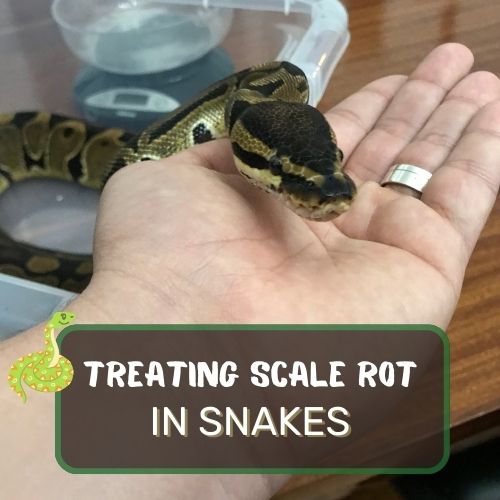


0 Comments